A summarizing review of what has been happening at the crypto markets. A look at trending sectors, liquidity, volatility, spreads and more. The weekly report in cooperation with market data provider Kaiko.
Bitcoin gained more than $13k last week as ETF inflows soared, with BlackRock's IBIT ETF hitting $10bn in AUM. Meanwhile, a U.S. court ruled that secondary sales of some crypto assets are securities and Binance faces a probe in Nigeria. This week we explore:
- Bitcoin's all time high
- Suspicious on-chain transactions from Bitforex
- Ethena's synthetic dollar debut
What is Bitcoin's all-time high?
Bitcoin exceeded $65K in the early hours of Monday, bringing its weekly gains to a whopping 27%. Over the next few days (or hours), we very well could see a new all time high (ATH). But, what exactly is bitcoin's ATH? It depends on who you ask. There are currently more than 200 active markets for BTC against the dollar, tether, euro, and dozens of other currencies. Last week, BTC hit a new high against several fiat currencies including the JPY, NGN and TRY. Early this morning, BTC hit ATH against the euro. ATH for the dollar still remains elusive.
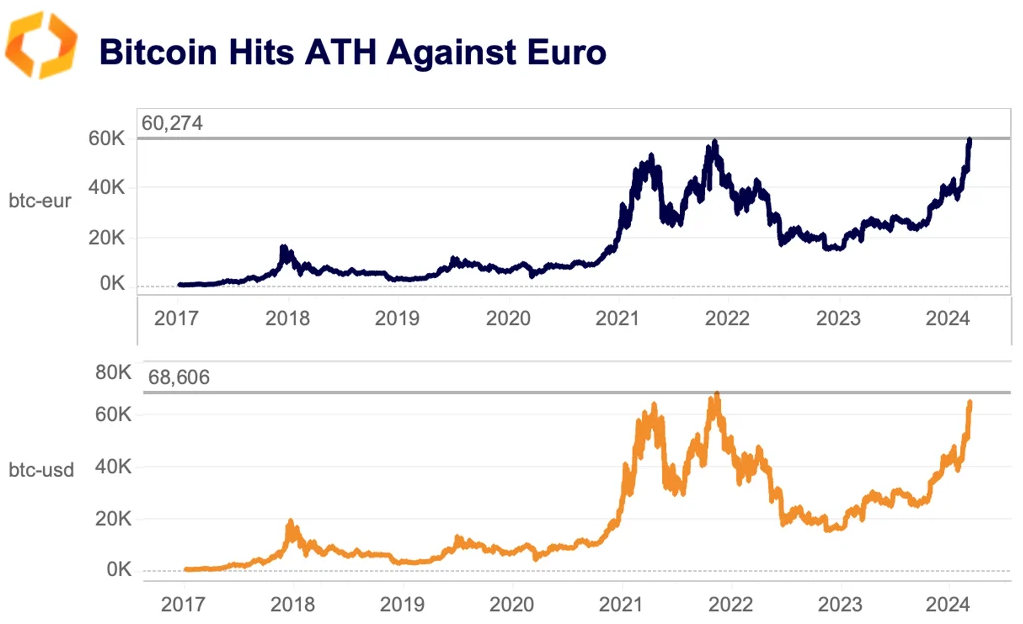
Another consideration when declaring ATH is which exchange you are looking at, which granularity of data, and which level of aggregation. Our data shows that BTC's all-time high diverged between exchanges. It hit its highest level of $69,076 on OkCoin back on Nov 10, 2021. On Kraken, prices never exceeded $68,966.

Looking at the average hourly VWAP aggregated across all exchanges under Kaiko's coverage, as of this morning Bitcoin was still 5% below its all-time high. BTC is closer than most altcoins including ETH, which is still 27% below its peak.

Overall, memecoins like PEPE and AI tokens have soared while metaverse tokens, which were among the main winners of the previous market cycle, are the worst performers this time around, with current values more than 90% below their peak.
Bitcoin trade volume hit highest since May 2021
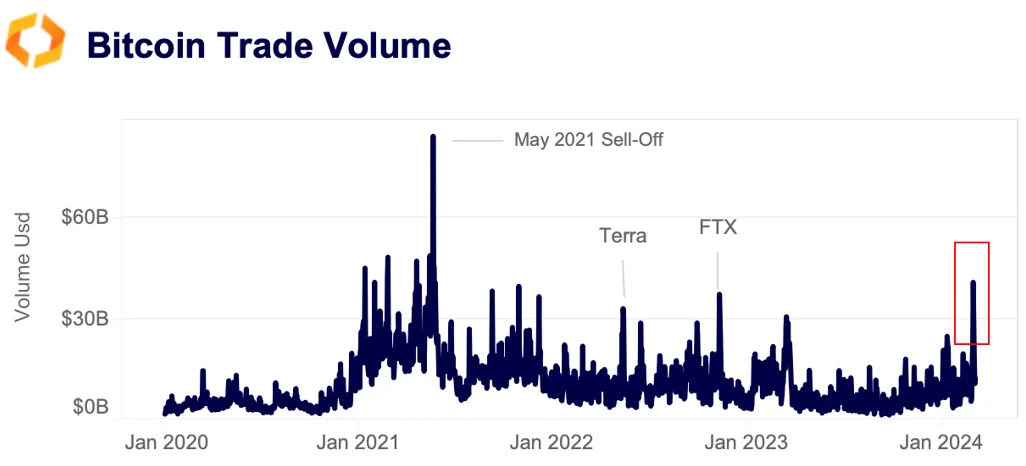
Last week's price rally was mirrored by both a surge in spot trade volumes and derivatives open interest. Bitcoin daily trade volume exceeded $40bn, its highest level since the May 2021 sell-off, surpassing its previous peak hit in the aftermath of the FTX collapse in November 2022. Buying exceeded selling on most exchanges and trading pairs, with offshore platforms leading the way.
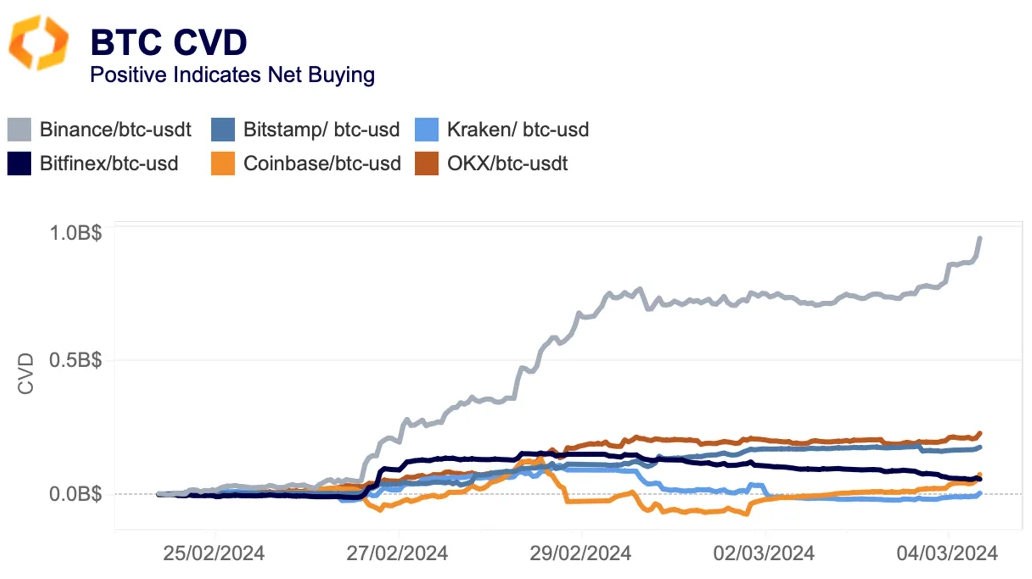
Binance saw net buying of nearly $1bn over the past ten days while U.S. exchanges saw significantly less buying activity. It should be noted that Coinbase Prime transactions are not included in our trade data, so we cannot trace the impact of ETF flows on spot activity (prime brokerage data is not public). Both BTC and ETH funding rates hit their highest levels since the ETFs approval in early January suggesting rising demand for bullish leverage.
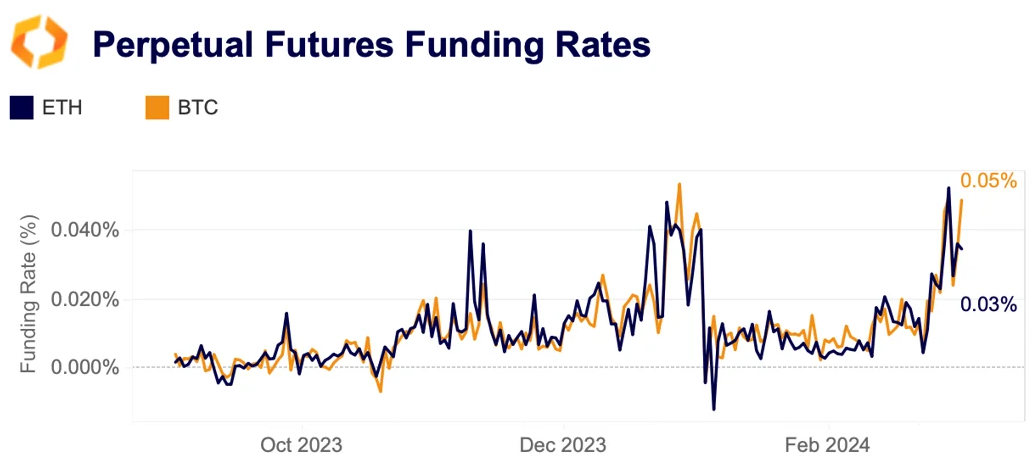
The amount of BTC and ETH open interest in USD terms is currently at its highest level since late 2021. Speculative pockets of the market saw a significant surge alongside Bitcoin suggesting risk appetite is back.
Ethena’s USDe trades at a premium on Uniswap
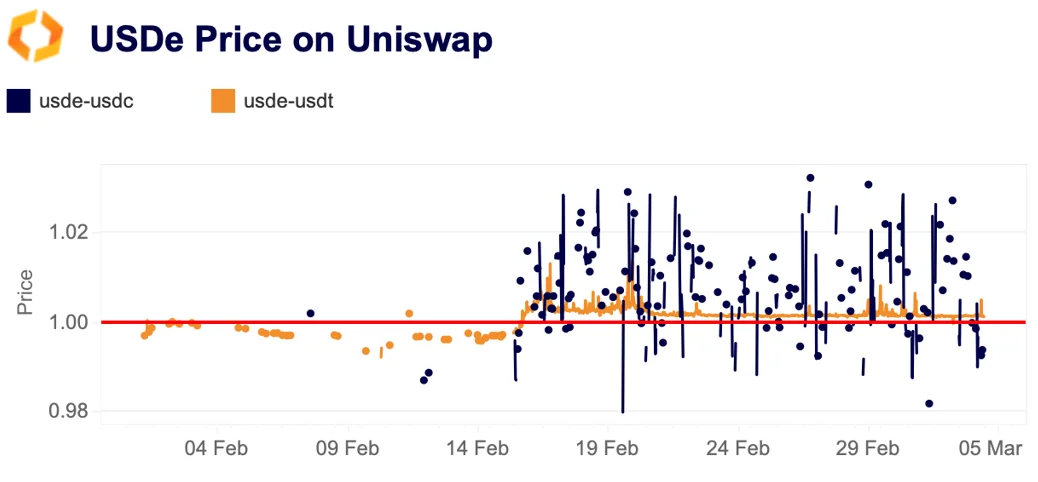
Ethena Labs’s newly launched synthetic dollar USDe made a controversial debut in February due to its double-digit yield and the company’s marketing strategy. The token, which currently trades on Unswap, has been trading at a premium against USDC and USDT since mid-February, suggesting strong demand. Its average trade volume over the past two weeks amounted to more than $45mn, which is above the average volume of most small-cap centralized stablecoins. USDe is intended to be pegged to $1 and can be staked, generating variable yield depending on ETH's funding rates.
Yield bearing products have gained traction over the past few months despite facing a tightening regulatory environment. At the end of 2023 a U.S. court ruled that stablecoins in combination with related yield protocols such as Terra’s UST are securities.
Mapping suspicious on-chain transactions from Bitforex
At 15h30 UTC time on Feb 23, Hong-Kong based exchange Bitforex abruptly halted operations without notice following suspicious transfers of nearly $60mn from the exchange’s hot wallet. Using Kaiko’s Wallet Data we investigated the largest transfers that occurred on Ethereum. Other smaller transfers were made on Bitcoin and TRON amounting to a little less than a million USD.
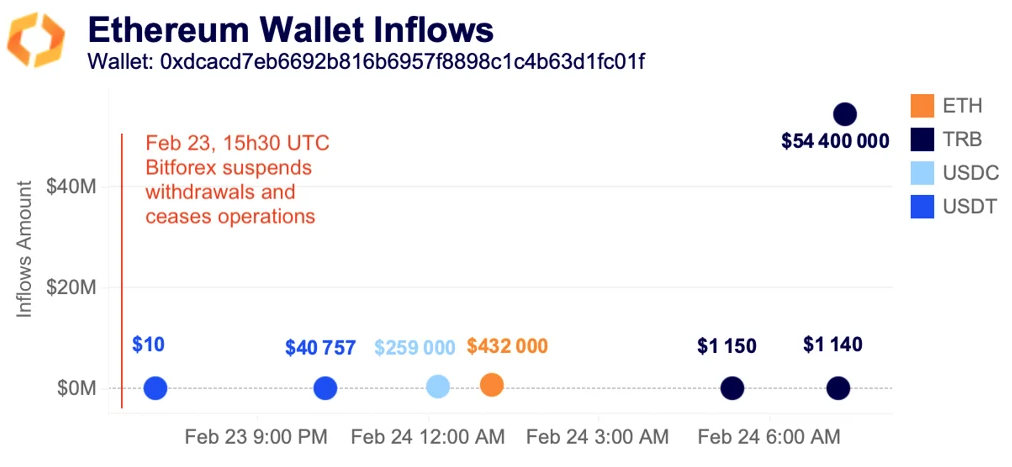
The chart above shows that an unknown address, 0xdc.., received over $55mn from Bitforex on Feb 23-24, hours before the exchange's shutdown. Most of the money ($54mn) was sent using a little-known and illiquid token — Tellor Oracle’s TRB. Looking more closely at the largest transfer of $54mn in TRB, the funds have been received by Bitforex's hot wallet from four different addresses just 5 hours before they were transferred (as a single transaction) to this unknown address.

Interestingly, our data shows that they have not moved since. Created back in 2018, Bitforex facilitated an average of $1.3bn in daily trade volumes over the past year, which is comparable to HTX. However, as we wrote last year, there is evidence that some of its volume was in fact artificially boosted via wash trading.
Additionally, the firm has been reported by Japan's Financial Services Agency, alongside MEXC, Bitget, and Bybit, for operating without proper registration within the Japanese territory. Given these elements, the overall situation surrounding Bitforex is quite concerning for users' funds, suggesting a possible exit scam or a hack.
Bitcoin miners underperform ahead of the halving
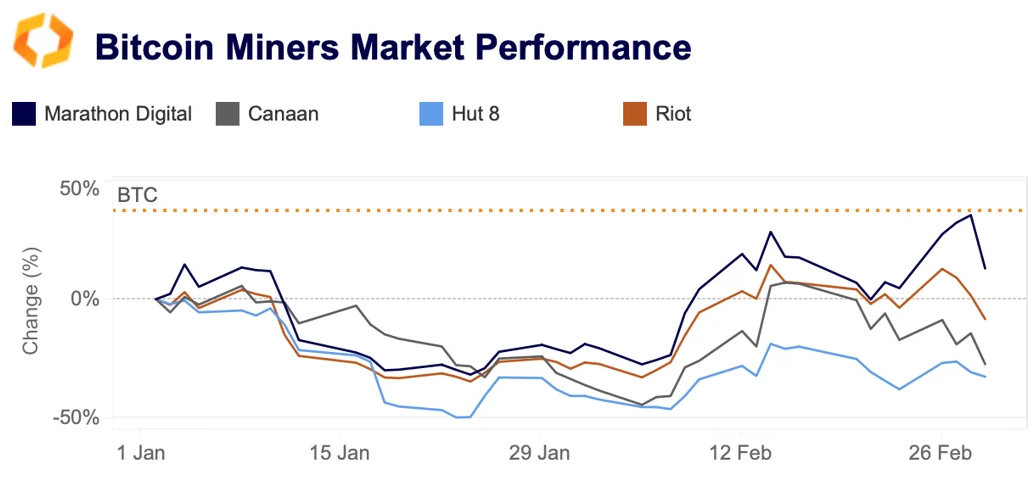
With approximately 45 days left before the next Bitcoin halving, all eyes are on the share price of Bitcoin miners. The largest U.S. publicly traded miners have strongly underperformed spot Bitcoin YTD. The divergence was striking last week, with all five miners closing the week in the red despite Bitcoin's double-digits gains.
Miners face revenue challenges in the short term as the halving will bring down miner rewards to 3.125 BTC per block from the current 6.25 BTC. Historically, this has favored miners with lower energy costs and led to some miners’ capitulation and a drop-in hash rate (a measure of competition).
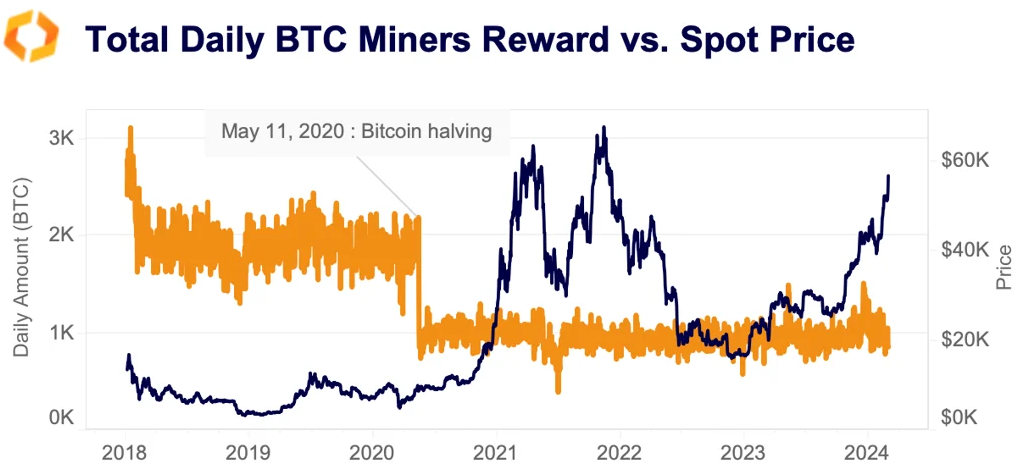
Miners are in a better position relative to previous halving events as steady ETF-induced demand could provide support for a Bitcoin price surge - driving miners’ profitability in the aftermath of the event.








